The keto diet is one of the most popular ways to improve health and lose weight without losing muscle mass. Many people are scared by the word diet, but keto is more of a lifestyle than strict nutrition.
On keto, you can and should eat hearty and varied. The main thing is to understand the basic rules of this method, and then you will not need to count calories and weigh food. You will be full, satisfied, energized, and happy with your weight loss. So what exactly is a keto diet, and how do you stick to it for weight loss?
The ketogenic diet is a type of low-carb nutrition that involves processing fat and ketone bodies for energy. The main point of this diet is the complete restriction of carbohydrates, both simple and complex. Only green vegetables that are high in fiber are allowed in carbohydrate foods. And most of the diet is made up of foods high in animal and vegetable fats.
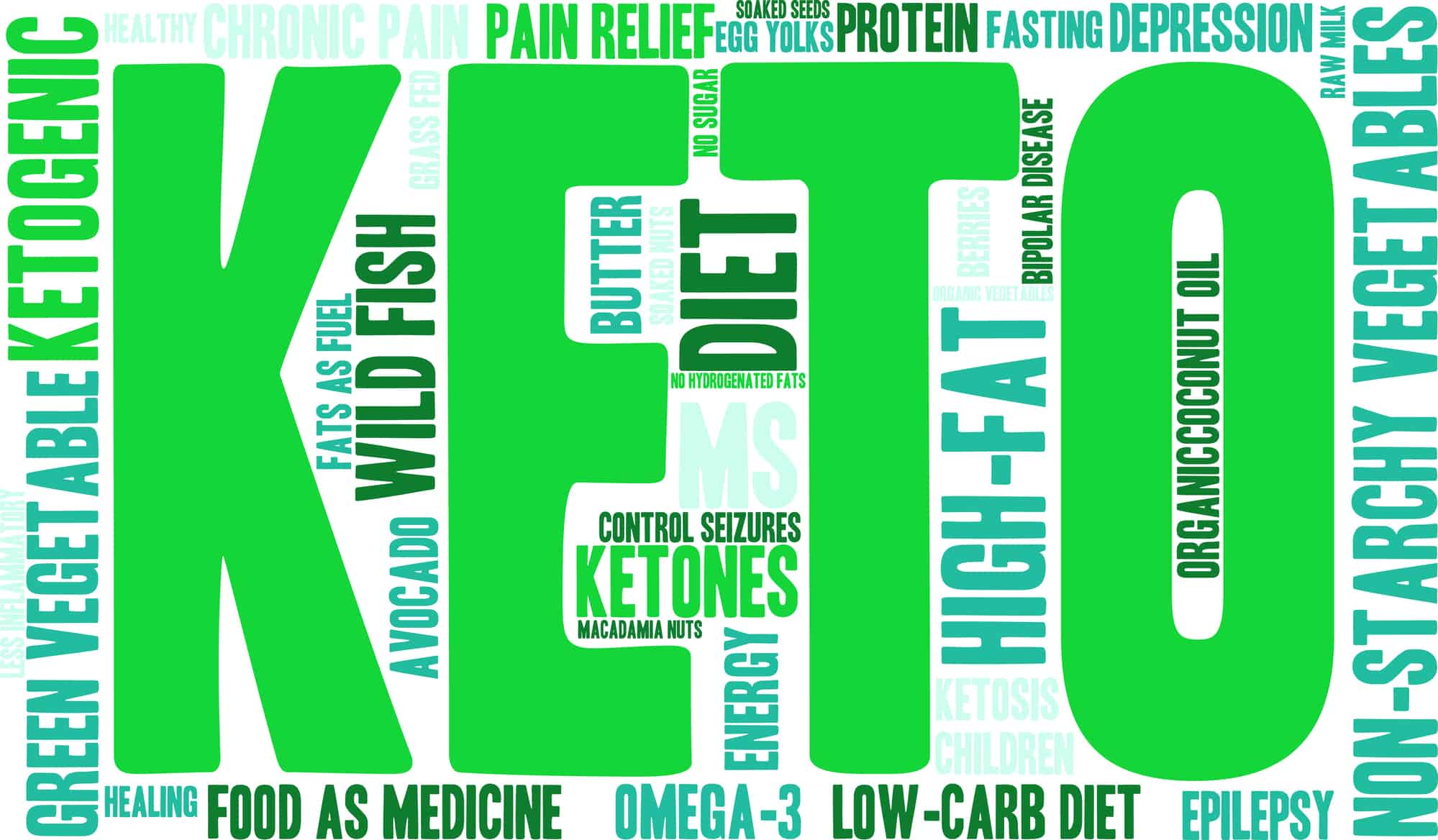
Want to try a keto diet for healthy weight loss but don’t know where to start? Or have you already started but are not sure if you are doing everything right? Want to know which foods to eat on a ketogenic diet and which ones to avoid?
In this article, you will find a complete list of foods allowed on a low-carb diet and what you should avoid getting it right. Stay tuned for all the details.
How Does the Keto Diet Work?
The ketogenic diet is based on consuming large amounts of animal and vegetable fats, excluding fast and complex carbohydrates. In a normal diet, saccharides are the main source of energy for the human body and brain.
However, if their number is strictly reduced, the body begins to break down fat stores to produce ketones as an alternative energy source. This condition is called ketosis, and it is a natural millennial mechanism of nutrition of the human body in conditions of deficiency of fruits, vegetables, and grains.
How Long Does it Take to Enter Ketosis? 9 Tips to Do it Quickly
During this process, ketone bodies are formed in the liver, nourishing every organ in our body. If the diet is followed correctly, enough ketone bodies are produced to support the entire body but so that they do not accumulate and are completely utilized.
Ketosis can be triggered by complete fasting for 2-3 days, but the keto diet allows your body to enter ketosis comfortably and avoid unnecessary stress. Once you start this state, you will feel an overall improvement in well-being and notice a steady weight loss.
Main Signs of Ketosis
The main signs that your body has entered a state of ketosis are as follows:
- Feeling of weakness and increased fatigue in the first days of adaptation. This condition is also called the keto flu. Due to the utilization of remaining glycogen in your liver and muscles, the body craves carbohydrates, and you experience mild symptoms of the flu. However, after a couple of days, this state passes, and you feel more vigorous and full of energy. It means that you are doing everything right, and ketosis has started.
- Rapid weight loss within one to two weeks after starting the diet. At first, the body consumes glycogen and utilizes all of its reserves. And glycogen can retain water in your body. Therefore, when you lose glycogen, you lose all excess fluid. The swelling goes away, and weight loss gradually slows down.
- Decreased appetite and no hunger spikes. Once your body adapts to the high-fat diet, you will feel full faster and longer, and you will no longer need to snack every two or three hours. Do not be alarmed; this is normal. Fats and proteins give you long-term satiety, and many people opt for one or two meals a day.
These are common signs that your body is successfully transitioning into ketosis. Sometimes you may notice a slight acetone odor from your breath or body. It is okay. In this way, the body flushes out excess ketones that are not used for energy. You can monitor your blood or urine ketone levels and your blood glucose levels, which will drop and return to normal if you have been experiencing any problems in the past. Normally, the level of ketones in the blood should not exceed 0.5-3 mmol/l, glucose – 4.5-5 mmol/l.
Useful Tips
However, I do not advise measuring this regularly if you are healthy and do not have a doctor’s recommendation. Healthy people have individual urinary ketone levels, and tests may not show anything if you’re in stable ketosis. It is due to the fact that your body produces exactly as many ketones as it needs, and there is no excess for excretion.
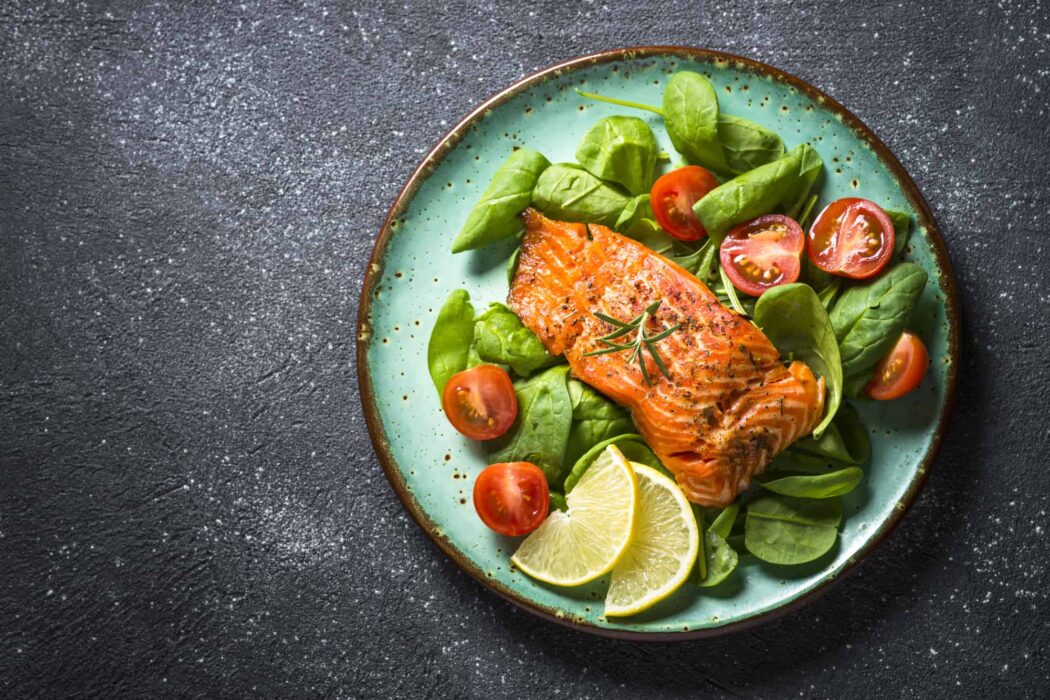
Benefits of the Keto Diet
There are many health benefits to the keto diet, and I will not describe them in detail. I will briefly list the main points you may experience while in stable ketosis:
- Healthy sound sleep and easy awakening. At the beginning of your keto journey, you may experience mild insomnia. However, once you adapt, you will notice that you will need less time to sleep and wake up full of strength and energy.
- Absence of sudden surges of insulin. By eliminating carbohydrates in your diet, you will no longer experience sharp spikes in hunger. The keto diet also helps even out the surges in blood sugar associated with insulin resistance.
- Smooth, stable weight loss. You will lose weight regularly and consistently due to the lack of carbohydrates in your diet. Even after stopping the keto diet, the weight will not return quickly, as thanks to the fats and proteins, the calorie content of the keto diet is quite high.
- Reducing the risk of type 2 diabetes. Due to the absence of sudden surges in glucose, insulin levels remain at the same level, which reduces the likelihood of developing type 2 diabetes.
- Normalization of cholesterol levels. “Bad” cholesterol is replaced by “good,” which reduces the risk of atherosclerosis and associated diseases.
- Strengthening the health of the nervous system. A low-carb diet can help fight epilepsy, Alzheimer’s disease, nervous disorders, depression, and anxiety.
The keto diet has many benefits, and I will explain them in detail later. In any case, for me, the main advantage of keto is that it is not a diet at all, but very tasty and satisfying nutrition that allows you to lose weight and stay healthy in general.
Foods List for the Keto Diet
A low-carb diet is suitable for all people; there is even a version for those who adhere to the principles of veganism or avoid dairy products. I have covered you in detail about keto for vegans and vegetarians, and I hope that my advice will help you enjoy such a diet.
6 Keto Food Cravings and High-Fat Alternatives
So, we’ve discussed in general terms what the keto diet is and how it works for your health and weight loss without losing muscle mass. What can you eat on keto? What foods should you avoid? Let’s figure it out together!
Fats
Healthy fats should make up 75-80% of your diet. Perhaps at first, this will seem a lot to you, but in fact, it does not mean that you will overeat fatty foods. Foods that are high in fat are very satisfying and will leave you feeling full for hours. What fats can you eat on a keto diet? Here are the main groups:
- Saturated fats should form the basis of your diet. They are found in meat, eggs, fatty dairy products (butter, fatty cheeses, cream), eggs, and some vegetable oils (olive, coconut, avocado oil, etc.)
- Monounsaturated fats should also be part of your diet. The main sources of this type of fat are unrefined oils, nuts and nut oils, and some types of meat.
- Polyunsaturated fats are Omega-3 and Omega-6. They are a must on any diet but in the right proportions. The optimal ratio between Omega-3 and Omega-6 is 1 in 3 or 1 in 4. The main sources of these beneficial fatty acids are fatty fish and some vegetable oils. Flaxseed oil, unlike the others, has the best ratio of Omega-3 and Omega-6. It is my favorite oil for making various green salads.
These are the three types of healthy fats that the keto diet is based on. However, there is another category – trans fats. They need to be completely eliminated (whether on a keto diet or any other type of nutrition.) These are processed fats that have been chemically altered (hydrogenated) to improve their shelf life and taste. Such fats are often found in processed and junk food, which you will have to give up. Avoid all hydrogenated fats as they are associated with heart and vascular disease.
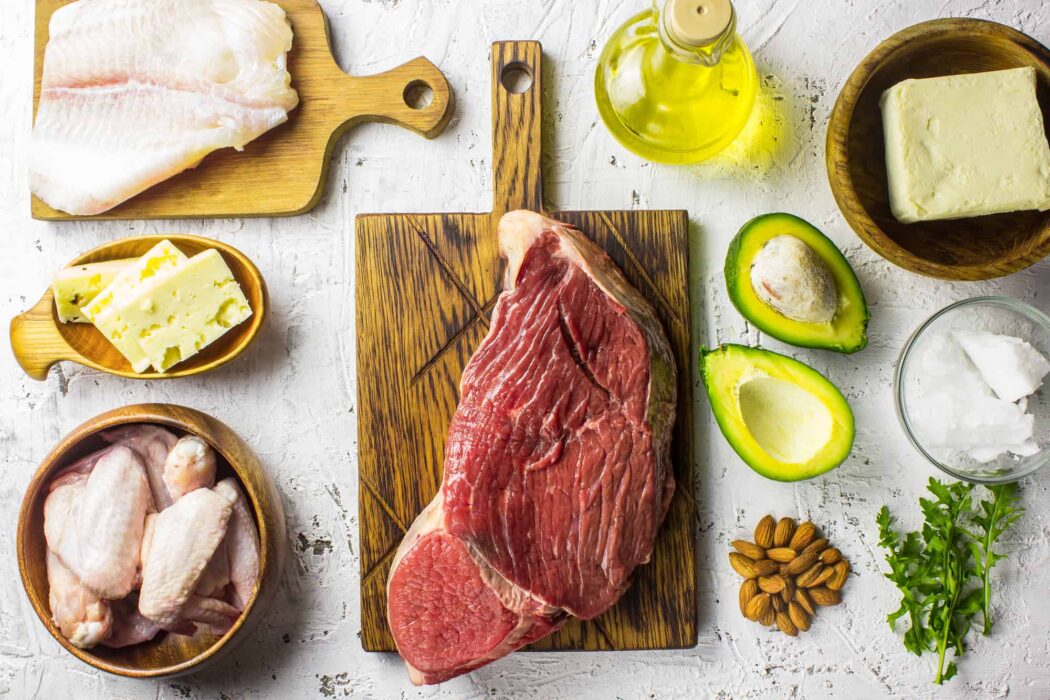
Useful Tips
I recommend using cold-pressed vegetable oils for salads, and coconut oil is best for cooking as it does not oxidize at high temperatures.
You can eat nuts on a keto diet in moderation, but be careful when using nuts as a snack, as it is very easy to eat much more than you need to satisfy your appetite. Also, keep in mind that cashews are relatively high in carbohydrates, while walnuts, pecans, coconuts, almonds, hazelnuts, and macadamia nuts are most beneficial.
Protein
Protein should make up about 15% of your daily diet. You should not increase this amount if you are not doing strength training. With a regular lifestyle, it is enough for a person to consume 1.1-1.3 grams of protein per kilogram of ideal body weight. Too much protein can interrupt your ketosis as the body successfully converts excess protein from amino acids into glucose.
Try to pay attention to the quality of your protein foods. Choose organic farm products and grass-fed meats whenever possible. If I cannot get grass-fed meat, I would prefer the whole piece of meat anyway, rather than choosing sausages. While both are proteins, you should choose the highest quality and avoid processed foods unless you know what those words on the label mean.
Here are the main sources of protein for the keto diet:
- Fatty fish. Try to choose wild fish: cod, pollock, salmon, tuna, etc.
- Any seafood. Shrimps, oysters, scallops, squids, crabs. They are almost fat-free, so be sure to add a good portion of fat to this meal.
- Eggs. Buy farm eggs whenever possible.
- Meat. These are beef, pork, veal, lamb, etc. Feel free to choose the fatty parts.
- Poultry. Chicken, duck, turkey, whatever you like.
- Internal parts. Liver, heart, etc. – an excellent source of beneficial micronutrients.
- Bacon, sausages, and any other organic processed meat. The most important thing is to check the labels. The foods should be free of sugar, flavor enhancers, and preservatives.
- Nut butter. Choose natural ones with no added sugar. Also, do not overuse peanut butter, as it contains too much Omega-6.
Carbs
During a keto diet, you will have to cut out most of the carbohydrates. Their daily norm in proportion to your nutrition should be up to 5%. It doesn’t mean you can eat a slice of bread with ham for breakfast and cut out carbs altogether for the rest of the day.
Should I Count Calories on Keto?
It’s all about your body’s insulin response after consuming these carbs. Therefore, only carbohydrates that do not cause an insulin spike or disrupt your ketosis are allowed on keto. These are green vegetables and herbs. They are high in fiber and very low in carbohydrates (1 to 3 grams per 100 grams).
Let’s take a closer look at the carbohydrate group.
Vegetables
Greens promote your digestion and give you the micronutrients you need to help your body process fats properly. Plus, your 15-20 grams of carbohydrates per day will have plenty of salad, herbs, and vegetables to diversify your diet.
It is extremely difficult to overdo it with carbs, choosing spinach, zucchini, lettuce, asparagus, and kale. They can definitely be called the main keto vegetables.
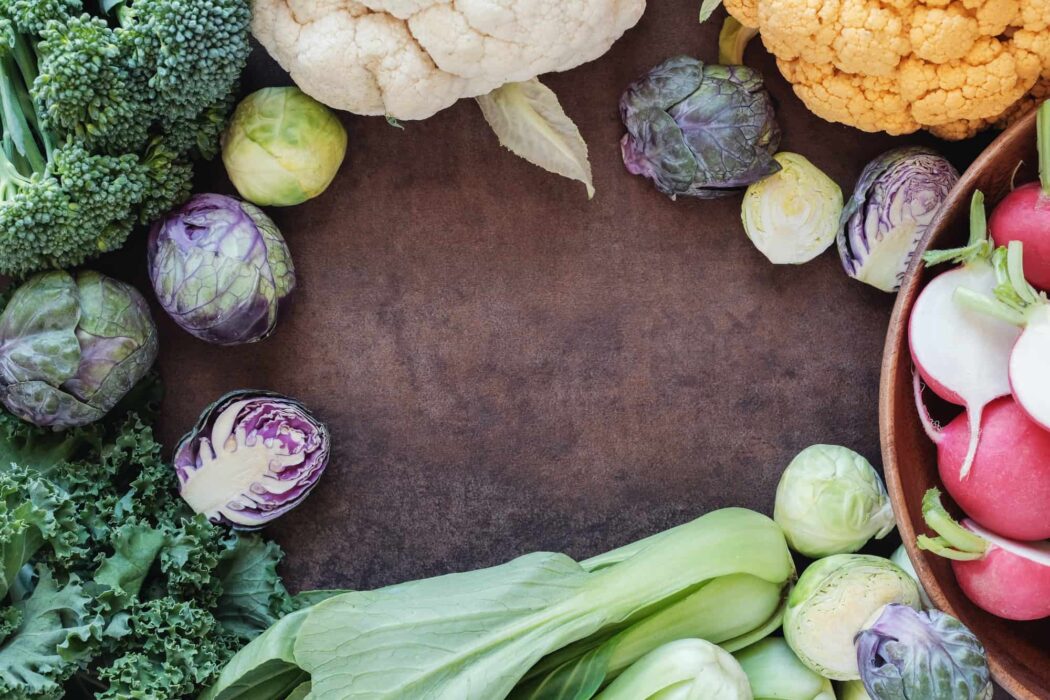
You should be a little more careful with vegetables that contain more carbohydrates, such as bell peppers (especially red and yellow), Brussels sprouts, and green beans. And here, size can play a significant role. For example, one medium bell pepper contains 3 to 7 grams of carbohydrates.
Although technically considered a fruit, tomatoes can be included in the keto diet. But again, be careful, as they are slightly higher in carbs, and when combined with other foods, they can easily take you far beyond 20 grams of carbs per day.
There are two basic rules for choosing low-carb, keto-friendly vegetables:
- Vegetables with leaves are best suited, i.e., all kinds of greens, spinach, etc.
- Green vegetables are usually lower in carbohydrates. For example, in regular cabbage, there are fewer carbohydrates than red cabbage. Also, green bell peppers are lower in carbohydrates than red or yellow ones.
If you opt for a more moderate, low-carb diet that allows more than 20 grams of carbs per day, feel free to eat as many vegetables as you like.
Fruits and Berries
On a keto diet, after adaptation, you can consume little raspberries, blackberries, and strawberries, up to about 100 grams per day, supplementing them with healthy fats. For example, I can pamper myself with sugar-free whipped cream with a handful of raspberries. And if you spread a little dark chocolate on top, you get a delicious dessert.
All the Truth about Keto-friendly Fruits
You should be careful with blueberries, as the body very quickly absorbs the carbohydrates they contain. Eat small portions of blueberries and not very often.
Nuts and Seeds
Fatty nuts and seeds are a great keto snack option and a base for many keto cooking ideas.
Although nuts and seeds are great sources of healthy fats, you should be careful about how much you eat, as they also contain protein, carbohydrates, and an abundance of Omega-6s that can upset the balance of fatty acids. When choosing types of nuts, be guided by the following ones:
- Fatty, low-carb nuts. Brazil nuts, macadamias, and pecans are the best sources of fat.
- Fatty, moderate in carbohydrates. Walnuts, almonds, hazelnuts, peanuts, and pine nuts should be used in moderation, mainly as food additives and flavoring.
- Nuts high in carbohydrates. Pistachios and cashews should be eaten rarely or avoided at all, as, for example, a handful of cashews contain almost a daily amount of carbohydrates.
Nut and seed flour can easily replace regular flour. This flour is most often used on the keto diet when preparing pastry and desserts. In particular, almond or flaxseed flour is a great choice.
Keto-Friendly Nuts: What to Eat and What to Avoid
Moreover, you can use a mixture of different types of flour to achieve the perfect texture and meet your carbohydrate intake without denying yourself your favorite foods. Don’t forget to check my keto mug brownie and keto ice cream recipes.
Besides baking, you can use flour as a breading (like coconut) or even make pizza dough. You can find great keto pizza recipes here. If you are allergic to nuts, you can use seed flour. However, keep in mind that it is higher in Omega-6 fatty acids.
Other Carbohydrates
During the keto diet, you will eat some foods that are low in carbohydrates and high in healthy fat. For example, these are heavy cream (up to 3 grams of carbohydrates per 100 grams of cream), nuts (2-5 grams of carbohydrates, depending on the type), cheeses (up to 3 grams of carbohydrates, depending on the type). Therefore, I advise you to consider all the carbs you eat in a day if you want to stay in ketosis.
Dairy foods are often part of a keto diet but should be consumed in moderation. Milk is forbidden as it contains lactose – usually from 2-5 g per 100 g. Also, you should not choose low-fat dairy products.
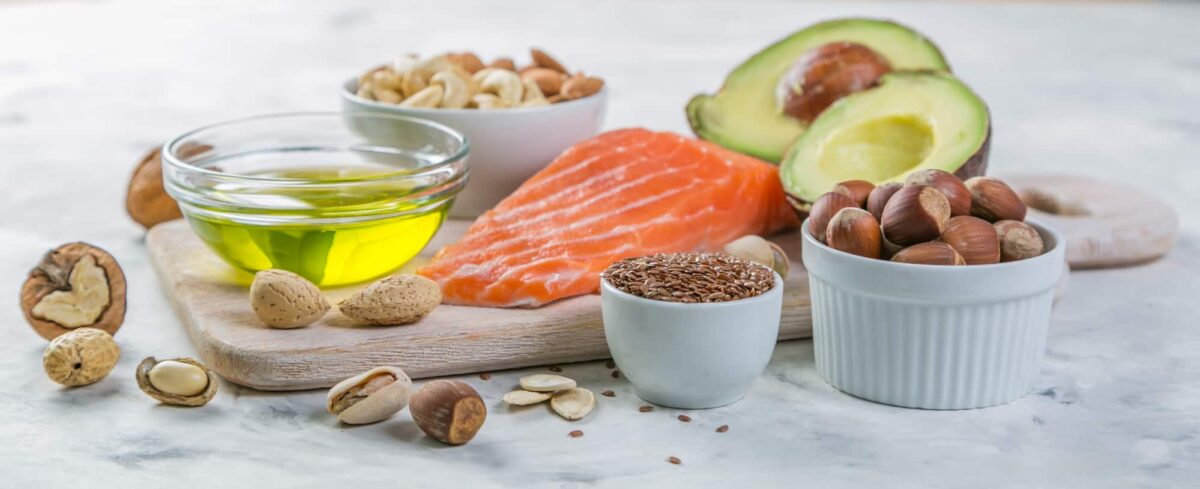
As you can see, everything is pretty simple. Choose a protein food, add healthy fat and lots of green vegetables, and you have a classic keto plate. For snacks, I usually use ham, nuts, cheeses, sun-dried tomatoes, and olives. However, keto snacks are rather a rare situation when I do not have time to eat fully. In the normal course of the day, it is enough for me to eat once or twice to feel satisfied and full of energy.
What to Drink on the Keto Diet?
Our bodies are at least two-thirds water, so the general recommendation is to drink plenty of fluids. Aim to drink more than 2 liters of clean water a day. This will help you stay hydrated and maintain the correct electrolyte balance in your body.
Here are some examples of typical keto drinks:
- Water. Pure, with lemon, carbonated.
- Broths. They are full of vitamins, minerals, and beneficial nutrients.
- Coffee. Improves mood, invigorates, helps focus, and promotes weight loss, if relevant.
- Bulletproof coffee. Here’s detailed info about this keto magic coffee.
- Tea. Has a similar effect to coffee.
- Coconut and almond milk. This is a great low-carb alternative to dairy milk.
- Diet soda. Generally acceptable, but may contribute to sugar cravings and insulin spikes, so don’t get carried away.
- Alcohol. Choose spirits (tequila, whiskey, gin, rum, etc.), as beer and wine contain too many carbohydrates. But remember that drinking alcohol can increase your appetite.
Keto and Intermittent Fasting
You’ve probably already read about intermittent fasting and its beneficial properties for rejuvenating and healing the whole body. Have you tried this nutrition before but didn’t like it? Let me guess – it was hard for you to endure the long break between meals. Did you feel uncomfortable if you didn’t have a snack?
The solution to this problem also lies in insulin. If your diet consists of high-carbohydrate foods, they are quickly absorbed by the body, causing spikes in hunger and making you want to eat after a short time.
Intermittent Fasting: Everything You Need to Know to Do it Right
For this simple reason, keto is the best friend of intermittent fasting. Even those people who try keto without a goal to reach intermittent fasting still come to this over time in a natural way. After all, healthy fats give you long-term satiety without spikes in blood sugar.
How many hours do you want to grab a snack after your high-carb breakfast? Very fast. How many hours can saturation last after scrambled eggs, bacon and avocado? Up to 6 hours. On a keto diet, you won’t be able to eat 4-5 times a day as you used to. So maybe this is a great time to try intermittent fasting with keto?

Main Mistakes People Make on Keto
“I’ve been on keto for two weeks now, but it doesn’t work. I cannot enter ketosis. I’m not losing weight. I am constantly hungry.”
Familiar questions? These are the most common keto problems. And they are the results of the most common mistakes beginners make. I will list the most frequent mistakes that can prevent you from entering ketosis and starting to lose weight:
- You don’t eat enough fat. Many people are habitually afraid to eat a lot of fat and limit their intake. However, let me remind you that fat must be 75-80% of your diet for ketosis to begin.
- You are eating too much protein. Often this point is combined with the previous one. But as I have said, your body converts excess protein to glucose and prevents your ketosis from happening. Limit protein to 15% of your daily diet.
- You are not counting ALL carbs. A couple of carbohydrates in a piece of dark chocolate, a couple more in an extra cup of coffee with cream, a dozen nuts for a snack, a handful of berries … All this must be counted. Otherwise, you will lose control over the number of carbs and will not reach ketosis.
There are other less obvious keto diet mistakes that we’ll talk about later.
General Recommendations
Getting started on a keto diet is actually much easier than it sounds. If counting carbohydrates scares you a bit, you have two options in the beginning. The first is to download a mobile application for counting calories, proteins, fats, and carbohydrates and enter everything there in detail.
Need Keto Motivation? The Best Tips for Your Keto Lifestyle
Less patient people can choose an even easier path. At the start of your keto journey, limit yourself to as simple, whole foods as possible. Eat what you are sure of – steak and some asparagus, scrambled eggs with bacon and avocado, grilled fish with a plate of green salad, and a couple of tablespoons of olive oil.
Avoid any complex carbohydrates: baked goods, cereals, pasta, bread, grains, fruits, and starchy vegetables. Avoid any sweets, milk, sugary soda, and artificial sweeteners. Learn to read labels because carbohydrates can hide even in sausages.
Try to avoid complex foods at first, processed sauces that hide secret carbohydrates, and foods with artificial sweeteners. Drink plenty of pure water and add a vitamin complex to it. And ketosis won’t keep you waiting!
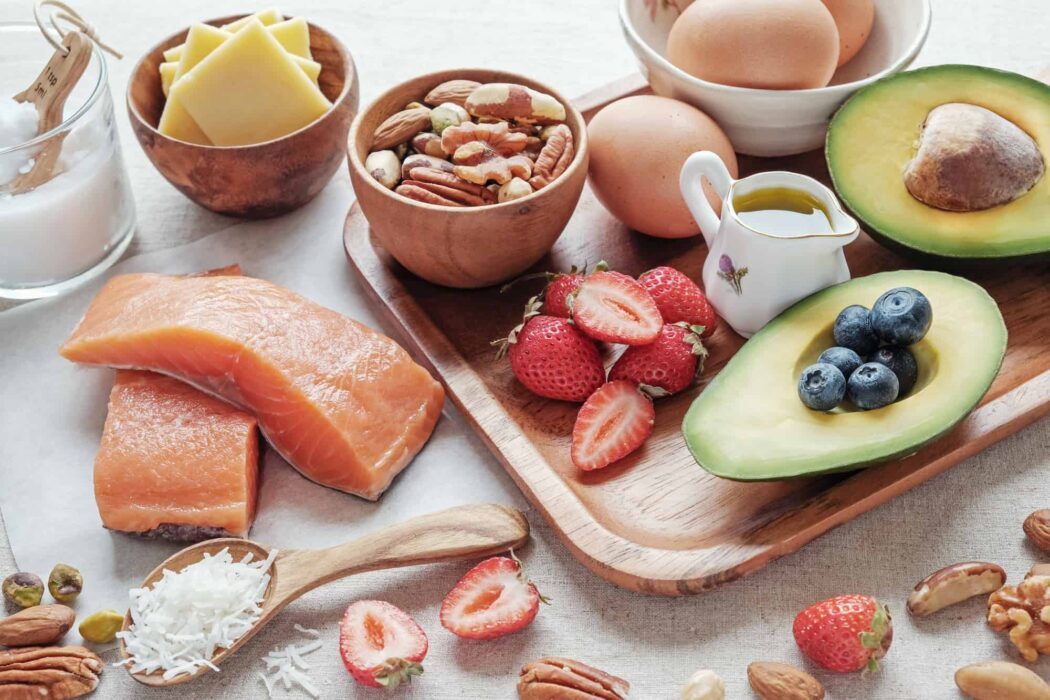
Conclusion
The keto diet is an easy and satisfying way to improve your health and lose weight. It can give you energy and healthy sleep, a light stomach, and stamina in training.
Unfortunately, many manufacturers now add sugar to even the most harmless and “healthy” foods. In general, give preference to whole foods over processed foods and carefully study the ingredients and nutrients of everything you eat. Limit your carbs, add healthy fats, and you will see a great change very soon!